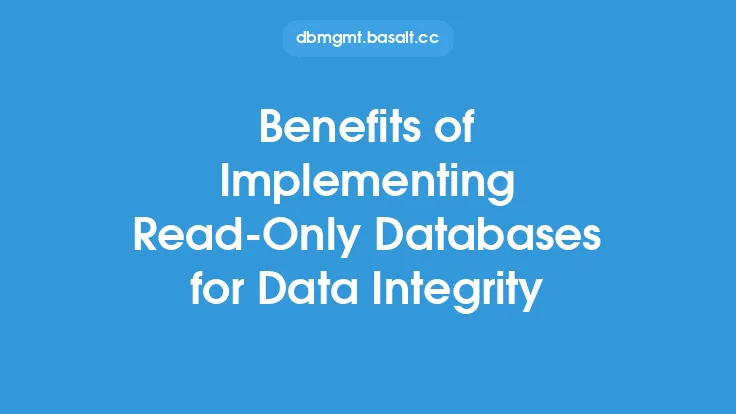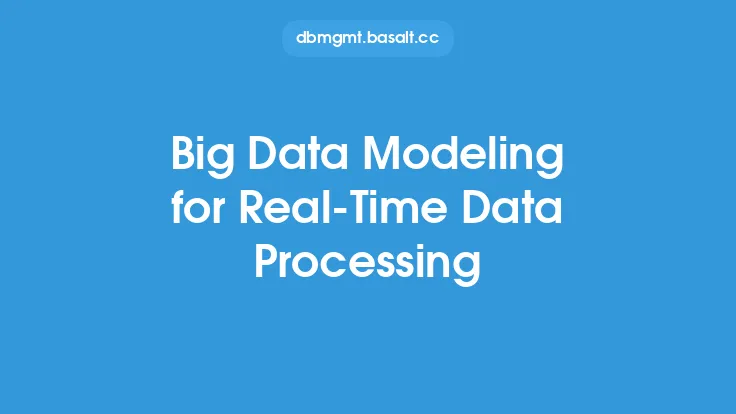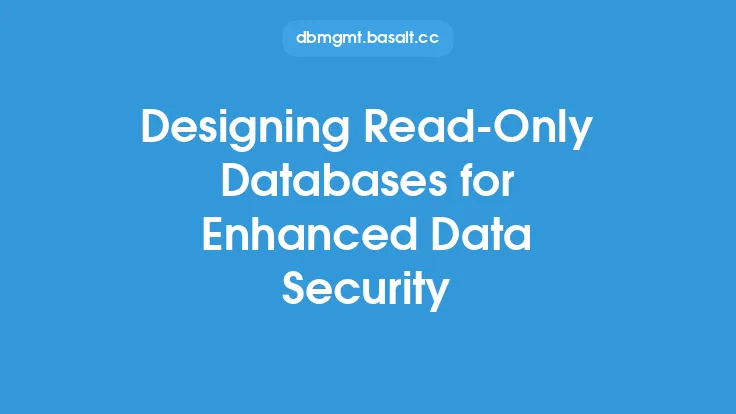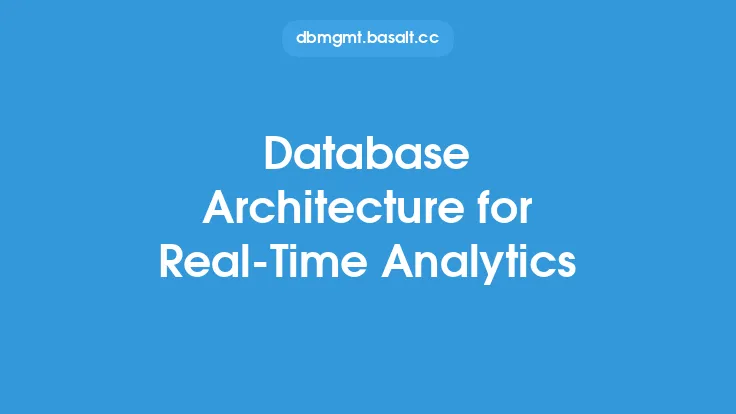Event-driven architecture (EDA) is a design pattern that has gained significant attention in recent years, particularly in the context of database design. This approach focuses on producing, processing, and reacting to events, which are significant changes in state or important milestones in a system. In the context of databases, EDA enables the creation of scalable, flexible, and highly responsive systems that can handle large volumes of data and provide real-time insights.
Introduction to Event-Driven Architecture
Event-driven architecture is based on the concept of events, which are notifications that something significant has happened. These events can be triggered by various sources, such as user interactions, sensor readings, or changes in data. The key characteristics of EDA include the production, detection, and consumption of events, which are then used to trigger reactions or actions in the system. In a database context, EDA enables the creation of a loosely coupled system, where different components can operate independently and respond to events as needed.
Benefits of Event-Driven Architecture for Databases
The benefits of using event-driven architecture for databases are numerous. One of the primary advantages is scalability, as EDA enables the handling of large volumes of data and provides real-time insights. Additionally, EDA promotes loose coupling, which allows different components to operate independently and reduces the risk of cascading failures. EDA also enables greater flexibility, as new components can be added or removed without affecting the overall system. Furthermore, EDA provides a high degree of fault tolerance, as events can be replayed or reprocessed in case of failures.
Key Components of Event-Driven Architecture
The key components of event-driven architecture include event producers, event brokers, and event consumers. Event producers are responsible for generating events, which can be triggered by various sources, such as user interactions or changes in data. Event brokers are responsible for managing the events, including storing, routing, and processing them. Event consumers, on the other hand, are responsible for reacting to the events, which can involve triggering actions or updating data. In a database context, these components can be implemented using various technologies, such as message queues, streaming platforms, or event-driven databases.
Event-Driven Database Design Patterns
There are several event-driven database design patterns that can be used to implement EDA in a database context. One of the most common patterns is the event sourcing pattern, which involves storing the history of an application's state as a sequence of events. This pattern enables the creation of a highly scalable and flexible system, as events can be replayed or reprocessed to recover the current state. Another pattern is the command query responsibility segregation (CQRS) pattern, which involves separating the responsibilities of handling commands and queries. This pattern enables the creation of a highly responsive system, as queries can be handled independently of commands.
Implementing Event-Driven Architecture for Databases
Implementing event-driven architecture for databases requires careful consideration of several factors, including the choice of technology, the design of the event model, and the implementation of event producers, brokers, and consumers. One of the key technologies used in EDA is message queues, such as Apache Kafka or RabbitMQ, which provide a scalable and reliable way to manage events. Streaming platforms, such as Apache Flink or Apache Storm, can also be used to process events in real-time. Additionally, event-driven databases, such as Apache Cassandra or MongoDB, can be used to store and manage events.
Challenges and Limitations of Event-Driven Architecture
While event-driven architecture provides several benefits, it also presents several challenges and limitations. One of the primary challenges is the complexity of implementing EDA, which requires careful consideration of several factors, including the design of the event model, the implementation of event producers, brokers, and consumers, and the choice of technology. Additionally, EDA can introduce new challenges, such as event ordering and consistency, which must be carefully managed to ensure the correctness of the system. Furthermore, EDA can also introduce new security risks, such as event tampering or replay attacks, which must be carefully mitigated.
Best Practices for Implementing Event-Driven Architecture
To implement event-driven architecture successfully, several best practices must be followed. One of the key best practices is to carefully design the event model, which involves identifying the significant changes in state or important milestones in the system. Additionally, the implementation of event producers, brokers, and consumers must be carefully considered, including the choice of technology and the design of the event processing pipeline. Furthermore, the system must be designed to handle failures and exceptions, including event replay and reprocessing. Finally, the system must be carefully monitored and maintained, including the tracking of event metrics and the detection of security risks.
Conclusion
Event-driven architecture is a powerful design pattern that can be used to create scalable, flexible, and highly responsive database systems. By producing, processing, and reacting to events, EDA enables the creation of a loosely coupled system that can handle large volumes of data and provide real-time insights. While EDA presents several challenges and limitations, careful consideration of several factors, including the design of the event model, the implementation of event producers, brokers, and consumers, and the choice of technology, can help to mitigate these risks. By following best practices and carefully designing the system, developers can create highly effective event-driven database systems that meet the needs of modern applications.





